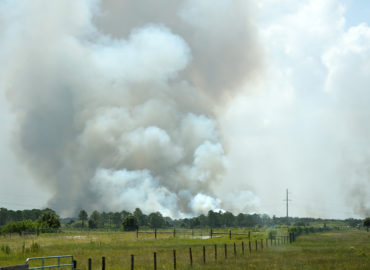There are many types of boundaries in this world. We have boundaries between countries, physical borders, and policies. For example, in Michigan, we had to adjust to changes in border crossing as a direct result of 9/11. While the public adjusted, Canada lost income from Michigan travelers and workers until the residents:
- One: applied for and received a passport
- Two: applied and received an enhanced license
Boundaries are critically imperative physically, whether it’s another country or the house next door; they help keep us safe and friendly.
A definition according to Utah State University, “In geopolitics, boundaries are dividing lines between territorial entities such as places or states. People and groups construct territory by creating, maintaining, and defending boundaries. [1] For example, states require boundaries to provide legitimacy for their control over their citizens. In other words, a boundary recognizes the territorial extent of sovereignty. This includes which people are under the control of the state and which resources they can use.
Boundaries are made visible (or demarcated) by things such as fences, flags, posts in the ground, and gates. Sometimes demarcations are frequently tied to the physical geography of the landscape. Physical barriers such as mountains, rivers, and lakes are frequently used, but each presents their own issues. For example, if a river is a boundary, what is the location of the boundary when the course of the river changes because of natural processes of erosion?
States secure their boundaries based on their relationship with their neighbors. Peaceful boundaries are formed, and cross boundary interaction can be positive when there are no disputes over where a boundary lies. To be peaceful, boundaries must support a sense of security for individuals, and cross-boundary trade and movement are seen to be positive,”.
When talking about healthy boundaries in our relationships, we still need to keep in mind that when peaceful boundaries are formed…interaction can be positive and safe for all parties involved. These boundaries typically fall into a few specific categories:
- Emotional (protecting our well-being)
- Physical (protecting our physical space / the imaginary hulahoop around us)
- Sexual (protecting our needs and safety)
Healthy relationships include respect from both sides as they communicate boundaries with one another with compassion, understanding, and respect for each other’s expectations.
What are the 3 steps to setting boundaries?
First, challenge your guilt. Often, we feel guilty about setting boundaries, thinking they might hurt others. It’s important to recognize this guilt and understand that it’s okay to prioritize your needs.
Next, identify your barriers and fears (honestly). What’s stopping you from setting boundaries? Is it fear of conflict, rejection, or feeling selfish? Recognizing these obstacles helps you address them head-on.
Lastly, make rules for yourself. Decide on the principles you want to live by and commit to them. These rules will guide you in maintaining your boundaries.
What are examples of healthy boundaries?
Setting boundaries isn’t about the depth of love you have for someone else; it’s more about how much you value and respect yourself by healthily expressing your needs.
Many of us carry emotional baggage from childhood, often tied to our relationships with our parents. As they play a significant role in shaping our adult identity, an unmanageable childhood can leave our boundaries unclear. If you’re emotionally fused with your parents, you might struggle with establishing clear boundaries, ending up giving too much and receiving too little. Understanding the importance of boundaries can help you break free from these patterns and build healthier relationships with both your family and yourself.
Additionally, those who struggle with boundaries frequently come from families with a history of addiction or compulsive behaviors, whether it’s drugs, alcohol, excessive exercise, or overeating. In such environments, these individuals oftentimes take on the addictive behaviors of their family, which makes it even more challenging to establish healthy limits.
So, how can you tell if you have boundary issues? Reflect on your family dynamics. Did you often find yourself taking care of your parents? Consider your current relationships as well. Do you feel like you’re always giving without getting much in return? Do you feel guilty when saying no? Do others often express confusion about where they stand with you because your behavior seems inconsistent? These are key indicators that you might need to work on setting more precise boundaries.
Setting boundaries isn’t about how much you love someone else; it’s about loving yourself enough to express your needs healthily.
Many adult children are emotionally entangled with their parents because parents shape much of our adult identity. If your childhood was chaotic or dysfunctional, your sense of boundaries might be unclear. When you’re emotionally fused with someone, it’s hard to draw lines between where they end and you begin, leading you to give too much and ask for too little. Understanding the importance of boundaries is crucial for breaking free from these old patterns and developing healthier relationships with your family and yourself.
Recognizing these patterns and making conscious efforts to establish and maintain healthy boundaries can significantly improve your overall well-being and your relationships. It’s about finding balance and ensuring that your needs and feelings are respected and valued.
What are examples of emotional boundaries?
Here are some tips to help with setting boundaries in your family relationships:
- Clearly identify your boundary
- Be straight forward
- Don’t apologize or give long explanations
- Use a calm and polite tone
- Start with tighter boundaries
- Address boundary violations early
- Don’t make it personal
- Respect yourself
Healthy boundaries can be set with everyone around you by being honest and respectful about what you expect and need.
How many types of boundaries are there?
In conclusion, boundaries play a fundamental role in various aspects of our lives, from geopolitical divides to personal relationships. Geopolitical boundaries help delineate the territorial extent of a state’s sovereignty, often demarcated by physical landmarks or agreed-upon markers. These boundaries promote order, security, and even positive cross-boundary interactions when peacefully managed.
In personal relationships, boundaries also hold immense importance, particularly in maintaining healthy, respectful, and secure interactions. Whether emotional, physical, or sexual, clearly defined boundaries ensure that our well-being and personal space are recognized and respected. Setting these boundaries involves acknowledging and overcoming internal barriers and consistently adhering to principles that guide healthy interactions.
Overall, establishing and respecting boundaries—whether on a global scale between countries or within the intimate realm of personal relationships—ensures safety, mutual respect, and positive engagement in our interconnected world. Taking conscious steps to set and communicate boundaries can lead to better understanding, deeper respect, and stronger, healthier connections.





